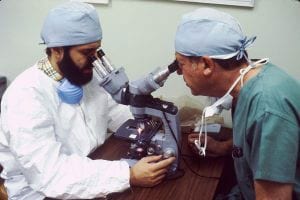The FDA has recently approved DANYELZA for the treatment of neuroblastoma in pediatric patients over the age of one and adult patients affected by refractory or relapsed neuroblastoma. This approval came after the treatment received the Orphan Drug, Rare Pediatric Disease, Priority Review, and Breakthrough Therapy designations.
About Neuroblastoma
Neuroblastoma is a rare form of cancer that forms from immature nerve cells, neuroblasts. It typically impacts children under the age of five. Affected individuals will experience symptoms like bulging eyes, bone pain, painless lumps beneath the skin, dark circles around the eyes, the inability to move certain body parts, trouble breathing, swollen stomach, and a lump in the abdomen, neck, or chest.
After noticing the characteristic symptoms, doctors will begin the diagnostic process with a physical exam. X-rays, CT scans, ultrasounds, bone marrow or tissue biopsies, and urine and blood tests will follow. After a diagnosis is confirmed, treatment options consist of chemotherapy, radiation, surgery, immunotherapy, stem cell transplants, or investigative treatments.
Approval for DANYELZA
This humanized, monoclonal antibody is intended to be administered in combination with granulocyte-macrophage colony-stimulating factor for the treatment of neuroblastoma. Patients will go to an outpatient setting three times a week, every four weeks to receive this treatment.
Approval came after the FDA analyzed data from two trials, both of which demonstrated that DANYELZA is well tolerated. Any adverse events that were present were manageable. Further research, specifically the ongoing Study 201, will play an important role in continued approval. This trial will enroll 80 patients and evaluate overall response rate, progression free survival, duration of response, and overall survival.
As neuroblastoma patients face an unmet medical need, this approval is a very exciting and important development. This treatment is expected to become available in the U.S. in the upcoming weeks, where it will be able to improve the lives of patients.
Find the source article here.








